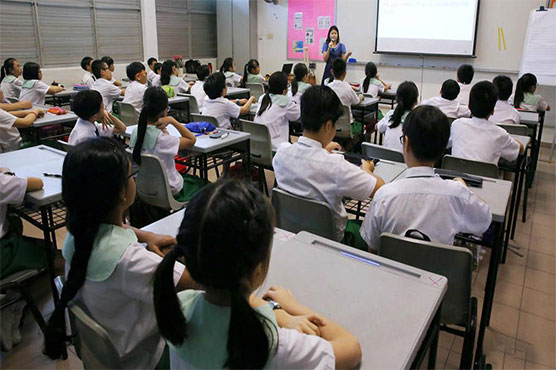Movement during class improves students' academic abilities

Active lessons may help children focus on learning, Ranade said in an email.
(Reuters Health) - When academic classes include physical activity, like squats or running in place, students do better on tests, a new study suggests.
The idea of intertwining academic learning with physical activity has come about as more and more schools have cut back on physical education (PE), the researchers explain in the British Journal of Sports Medicine.
Teachers say “time is the main barrier to physical education,” said coauthor Emma Norris of the Centre for Behavior Change at University College London. “Teachers would like to give pupils active time in breaks and PE but academic priorities and targets often mean active time is removed.”
One workaround is to add physical activity to regular lessons, Norris said in an email. “Active lessons allow teachers to maintain academic time whilst also providing children with an outlet for activity,” she added.
Still, Norris said, a “combination of activity is the best solution, including active lessons, breaks, PE and opportunities before and after school.”
To analyze the impact of physical activity during lessons on academic achievement, Norris and colleagues reviewed the medical literature looking for studies on the topic. They settled on 42 studies, 37 of which were used for analyses combining data from multiple studies. Overall, the new study included information on 12,663 students, mostly in grade school or preschool. Nearly half the studies were from the U.S., seven were conducted in Australia, five in the U.K., four in the Netherlands and one each in China, Croatia, Ireland, Israel, Portugal and Sweden.
Active lessons were linked with better test scores, but in general they did not lead to higher levels of overall activity or improvements in BMI. The researchers suspect students might have compensated for active lessons by being less active the rest of the day.
Active lessons may help make up for the fact that school children aren’t getting enough exercise, said Dana Rofey, an associate professor at the University of Pittsburgh School of Medicine.
“Our group has found that these improvements not only show up academically but are significant enough that we see changes in their brains with increased physical activity,” Rofey said in an email. “There is also ample evidence that changes can positively affect academic achievement.”
Active lessons may be a good idea even for schools that still offer PE, Rofey said.
“The more movement our kids get, the better,” she added. “Incorporating small bouts of physical activity at any point during the day should be encouraged. Several large studies have now found that small bouts throughout the day are equivalent to one large bout. So, if time is a challenge, breaking physical activity up throughout the day can have similar effects.”
Still, “it looks as though physically active school lessons do not make a substantial impact on overall fitness as assessed by BMI, said Dr. Sheena Ranade, a pediatric orthopedic surgeon at The Mount Sinai Hospital in New York. But “exercise is exercise, and elevating the heart rate for extended periods of time, using your muscles and developing physical skills through sports and play are beneficial whenever you choose to participate in them,” she added
Active lessons may help children focus on learning, Ranade said in an email.
“Children are full of energy and if, as implied in this meta-analysis, when children are using their bodies they are more able to engage in their lessons, that is a good thing,” Ranade said. “Additionally, increased activity helps with bone development, cardiac strength and endurance, dexterity and mental wellbeing.”


